- M : +91-9810113826
- E : trvlteam@trefftravelteam.com
Austria-Hungary (the "Dual Monarchy") was a dualistic state, which was created after the constitutional reform of the Austrian Empire in 1867 and existed until 1918. Before World War I, after which it collapsed, the Austro-
Hungarian Empire encompassed the entire territory of today's Austria, Hungary, Czech Republic, Slovakia, Slovenia, Croatia, Bosnia and Herzegovina and some parts of today’s territory of Italy (South Tyrol, Trieste, part of Friuli, part
of Carinthia and Carniola), Romania (Transylvania), Serbia (Vojvodina), Montenegro (Bay of Kotor), Poland and Ukraine (Galicia, Bukovina).
We invite you to explore part of this monarchy with us. The route will lead us through the biggest and most beautiful cities. In twelve days, we will visit six countries, six major cities and other touristic attractions.

Reception at the Vienna Schwechat Airport. Transport to the city, passing through the Austrian OMV refinery. Evening tour around the capital city of Austria will include a panoramic ride through the 5.2 km long roundabout - Vienna Ring that surrounds Vienna - Inner Stadt. The famous psychoanalyst Sigmund Freud walked around the Ring daily. We will see UNO City (Vienna International Center), rotating wheel in the Prater park, the Austrian Parliament and much more. Dinner can be served in one of the restaurants with the famous Viennese steak (surcharge). Overnight stay.
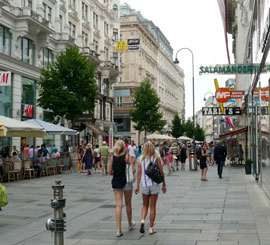
Stroll along the city’s promenade Kärntner Straße till the church of St. Stephen. We visit the most famous Viennese cathedral, a Gothic jewel, and continue walking down the Graben Street all the way to the entrance of Hofburg palace, which also hosted emperors of the Habsburg dynasty. In the area around the Albertina museum complex we have time for lunch. Afterwards we taste the most famous Viennese delight - Sacher cake. We continue our stroll towards the Vienna opera, Maria Theresa market, city hall which was built in the neo-Gothic style and much more. In the afternoon we visit the summer residence of the Habsburgs - Schönbrunn Palace. The Baroque palace is listed on the UNESCO World Heritage List. Overnight stay.
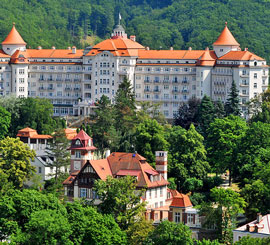
After breakfast, we head towards Czech Republic. In the afternoon, we arrive to Karlovy Vary, called Carlsbad in German language, one of the most famous spa towns. It was founded already in the second half of the 14th century. 13 main springs of thermal mineral water have been discovered here and since the 19th century, Karlovy Vary has become the most popular tourist destination of VIP's throughout Europe. The city is also known for its film festival and liqueur “Karlovy Becherovki”, which has been manufactured since 1807. We have the opportunity to taste this bitter yellow-green liquor later in the evening in one of the restaurants in town, where we enjoy our dinner. Overnight stay.
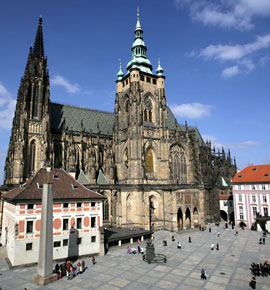
After breakfast, we depart to Prague, the capital city of Czech Republic. It is also called "Golden Prague", the city of one hundred towers. The city tour begins at Hradcany, a huge castle complex, where we visit the St. Vid Cathedral and the Royal Palace. Of course we do not miss out visiting the famous Golden Lane, where famous writer Franz Kafka created his work. We enjoy lunch in the district of Mala Strana. Afterwards we walk through the Charles Bridge, one of the oldest stone bridges in Europe dated from the 14th century. The bridge is decorated with statues of saints, for example St. Nepomuk, who was thrown into the Vltava river. If the weather conditions are favorable, we board a boat and sail down the river (optional). Famous Czech composer Bedrich Smetana dedicated the symphonic poem called “My Homeland” to the Vltava river. Dinner is to be held in one of the famous Czech pubs where we have the opportunity to taste a pint of excellent Czech beer, a beverage that is drunk here more than anywhere else in the world. Overnight stay.
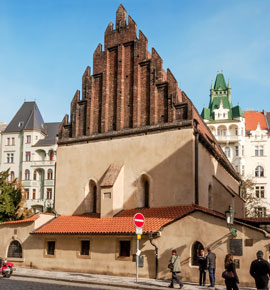
After breakfast, we visit the Jewish part of Prague - Josefov, and see the Old-New Synagogue with its cemetery. We walk to the Old Town Square, which is famous for its old town hall, its astronomical hour dated from the 15th century, the monument of the Czech reformer Jan Hus and the Tyn church. Wenceslas square is the square where Czech history took place and is recognizable for the Vaclav monument, dedicated to the Czech king and saint from the 10th century. In the square, we can see a memorial monument in the spot where a Czech student Jan Palach committed suicide in a political protest against the Warsaw Pact armies entering Czechoslovakia in January 1969. Overnight stay.
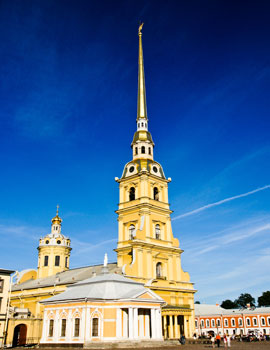
After breakfast, we visit the second largest Czech city Brno, where we visit the capital of Moravia, once a historic province of the Austro-Hungarian Empire. Before that, it was a part of one of the first Slavic countries, the Great Moravia. It was named after the Morava river and its name is of Slavic origin, meaning water and wetlands.
We climb to the fortress of Špilberk, which was a prison for enemies of the Austro-Hungarian Empire for centuries. Today, it is a museum. Two majestic church bell towers Peter and Paul, dated from the 14th century, rise above the city. In the Jacob Church in the center of the city, there is a small man showing his bare buttocks to the people passing by. We visit the vegetable market with Parnas Fountain, a baroque palace Dietrichstein and much more.
Moravia is also known for its excellent wines, especially white wines. In the evening hours we departure to the capital city of Slovakia, Bratislava. Overnight stay.
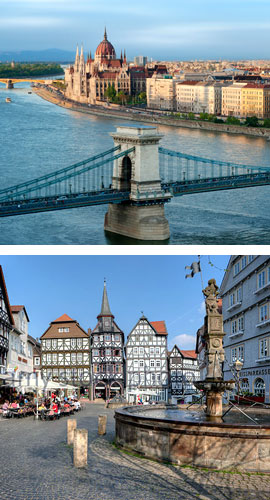
After breakfast, we climb the castle hill where Bratislava Castle stands and where the Celts controlled the trade route and its passage over the river Danube from. The last major renovation of the castle was commissioned by the Habsburg Empress Maria Theresa in the 18th century, when the castle was renovated in Baroque style. In the city, we visit the majestic cathedral dedicated to St. Martin in which, during the time of the Turkish occupation of Budapest, the Hungarian kings were crowned. We walk under Michalová tower, the only remaining medieval gate that leads to the city. We continue our stroll to the main square with Renaissance Roland fountain. We enter the classicist Primasovo (archbishop) palace, where in 1805 the “Peace of Bratislava” was signed after the defeat of the monarchy against Napoleon. On the route to the old town, there are lovely statues exhibited to warm up the atmosphere, such as the beautiful Naci, Napoleonic soldier, Cumil and others. We will also see Mozart's palace, where the famous composer had one of his first concerts as a child. The Slovak National Theatre (Divadlo-theater) was a creation of the Viennese architectural company Fellner & Helmer, which also designed a number of buildings throughout the Austro-Hungarian Empire at the end of the 19th century. We will see a monument dedicated to Danish storyteller Hans Christian Andersen, who visited Bratislava in 1840 and got his inspiration for the fairy tale "The Ugly Duckling" and "The Little Match Girl" there. In the late afternoon, we drive to Budapest. The Hungarian capital is also called “the beauty by the Danube river”, mainly because of the picturesque location and grand architecture from the golden era of the city in the second half of the 19th century that gives it a special touch. Overnight stay.
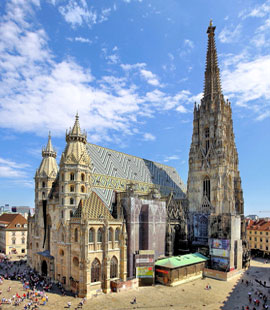
After breakfast, we visit other sights - a particularly interesting covered market, the magnificent St. Stephen's Cathedral and if the weather conditions are favourable, we take a boat ride from the Margaret Island and pass through all the important bridges, the facades of the Parliament and the famous Citadell. We drive over the chain bridge on the castle hill where Matthias Church, Fishing fortress and castle palace stand, providing us with a beautiful view of Budapest. In the afternoon, we devote some time to visiting the old town and the famous Vaci Street, which is considered the heart of the city. There is also to be some free time for you to buy souvenirs and explore the city. We recommend dinner, music and dancing in the traditional Hungarian restaurants called "Carde". Overnight stay.
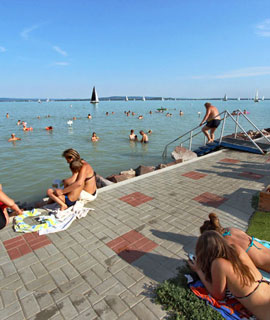
After breakfast, we head towards Croatia. The path will lead us through the picturesque Hungarian Lake Balaton, the largest freshwater lake in Central Europe. After crossing the Hungarian border with Croatia we leave the Pannonian Plain, which is the residue of the ancient Pannonian Sea, and drive towards the hilly Croatian Zagorje. We stop for lunch. In the late afternoon, we arrive in Zagreb. A tour of the capital city is to be organized in the evening hours. The National Croatian Theater is a Neo-Baroque art building, built by the Viennese architectural company Fellner & Helmer, which we already had a chance to see during our journey. We stroll down the blooming park Zrinjevac, which is a popular promenade with its pavilion and a number of wells. King Tomislav’s monument reminds us of the 10th century, when Croatia had an important military and political role in the region. We conclude our walk at the main square, Ban Josip Jelacic Square. Dinner is served in one of the restaurants in the picturesque Tkalciceva Street (surcharge). Overnight stay.

Our morning tour includes a walk through Donji grad till Kaptol. We see the Cathedral, the largest church in Croatia. Zagreb Cathedral or the Cathedral of the Assumption, St. Stephen's Cathedral and Ladislav’s Cathedral form the archdiocese of Zagreb. Its bell towers are staggering 105 meters high. We will see the Upper Town, Bloody bridge, Stone Gate and St. Mark's Square. In the city tower Lotršcak, built in the 13th century, stands a hill top cannon which, for more than a century, has been marking the midday with a loud bang. We descend to one of the longest and most prominent streets in Zagreb - Ilica. We continue our journey towards Slovenia, where we arrive in the late afternoon. Hotel accommodation, evening stroll through Ljubljana, time for dinner and overnight stay are included.
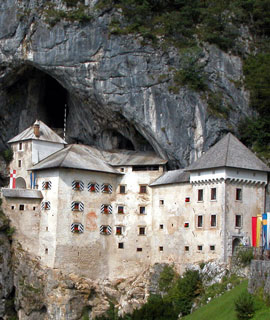
After breakfast, we drive to Postojna. We visit the largest and most beautiful Karst cave in Europe, the Postojna Cave. Guided tour of the cave includes walking and driving with an attractive cave train, where you are be able to admire 5 kilometres of tunnels, passages and spectacular halls. After visiting the cave, we continue our journey to Bled, the pearl of Alpine Slovenia. We take a ride with "pletna", a sort of gondola, which takes us to the island in the middle of Lake Bled, where a wonderful church is situated. We have the opportunity to try the typical local dessert, “kremšnita” (cream slice cake). We visit a castle, which is more than 1000 years old and is the oldest one in Slovenia. The castle stands on top of a 130 m high cliff above the lake. If the weather is nice, we can enjoy the view of the Alps and Triglav, the highest Slovenian mountain. Afterwards we return to Ljubljana, where we visit Prešeren Square, Tromostovje (the Triple Bridge), Town Square with the baroque fountain, the Town Hall and cathedral Church of St. Nicholas. We climb to Ljubljana Castle, which offers a beautiful view of the entire city. Ljubljana has won the prestigious award for the European Green Capital 2016. Overnight stay.
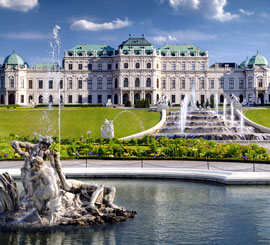
Transport to Vienna Schwechat Airport.
Disclaimer: Above is a standard itinerary. Final tour may vary depending upon the exact air, rail, road schedule and passenger requirement.

Copyright © 2017 Treff Travel Team. All Rights Reserved.